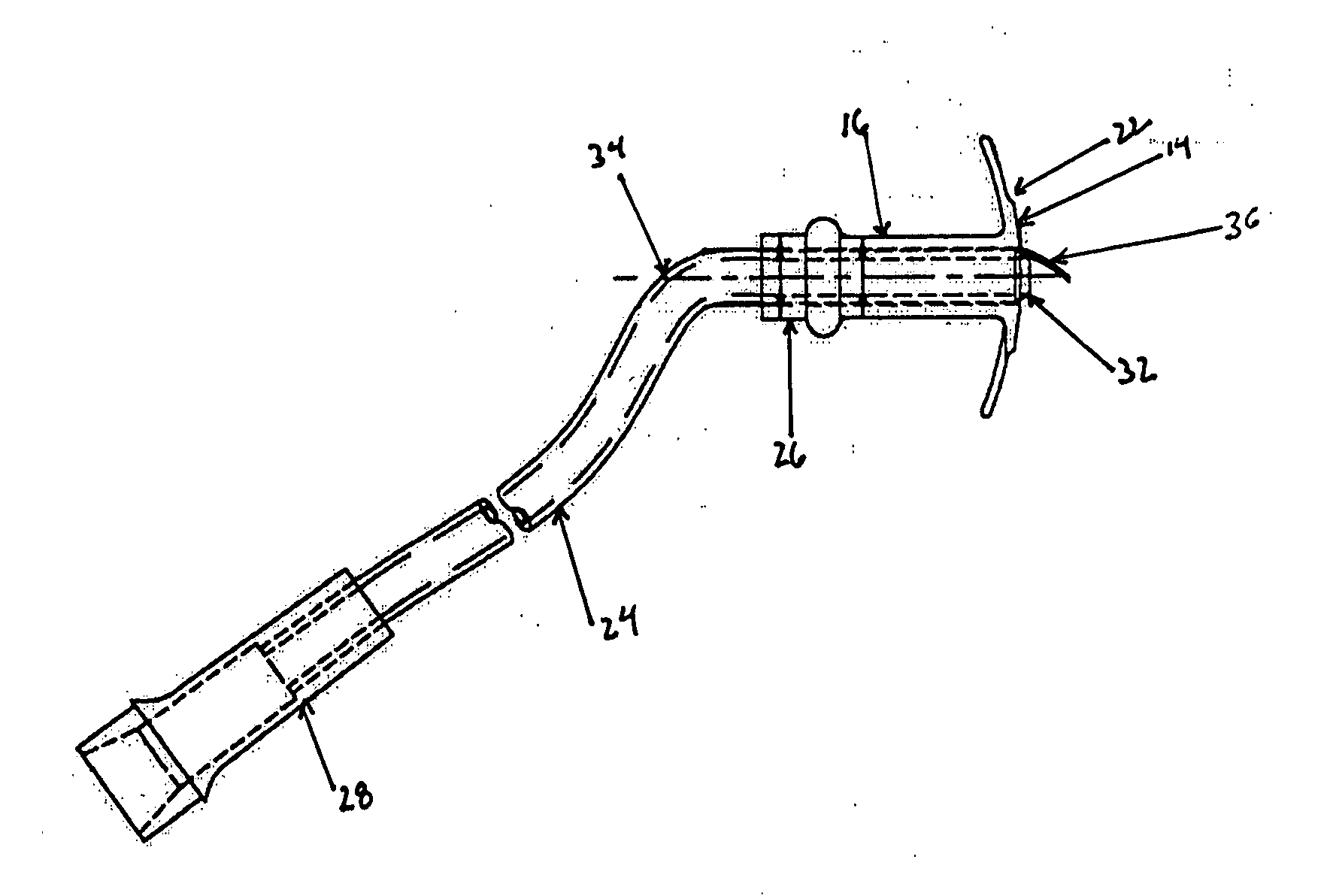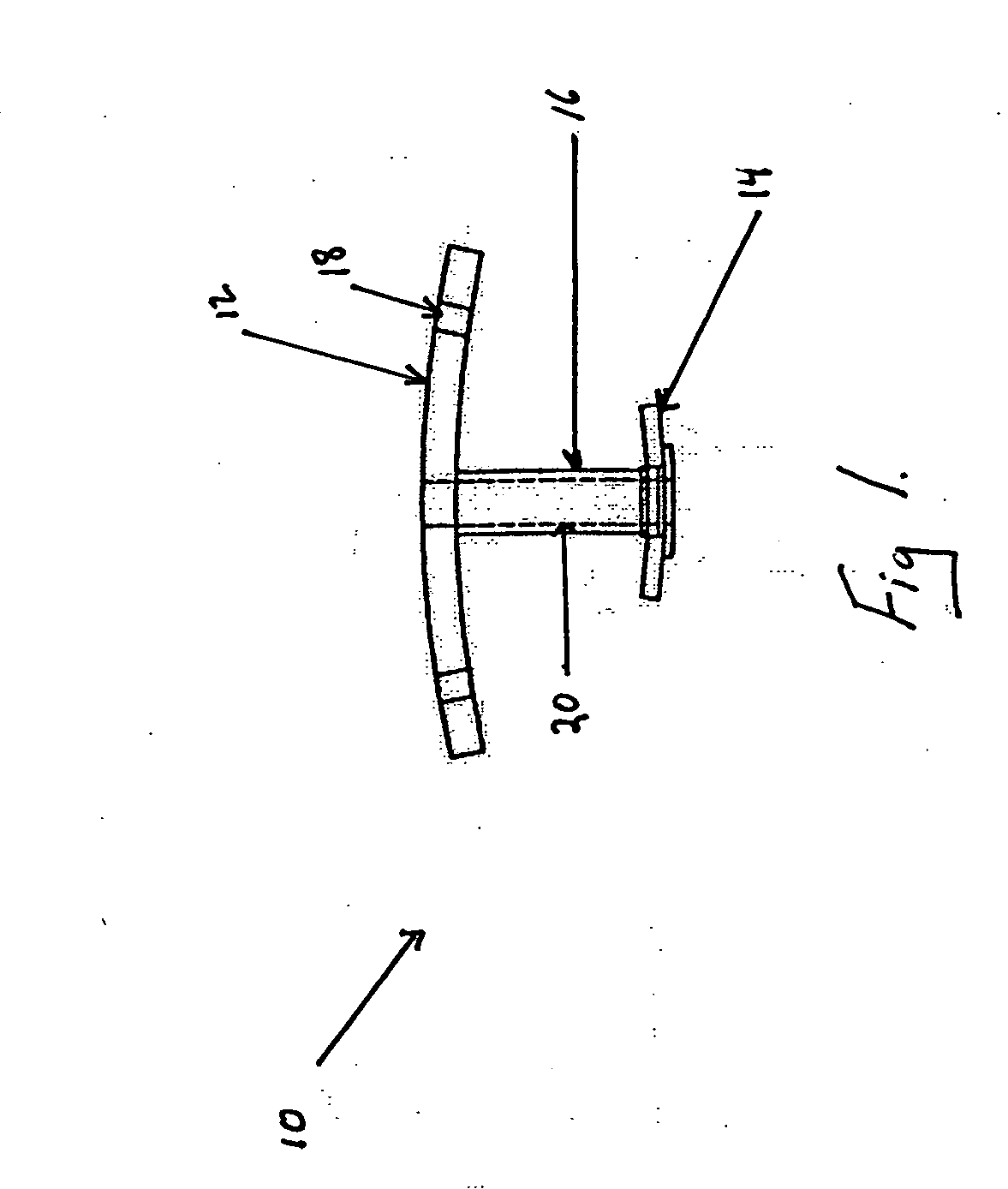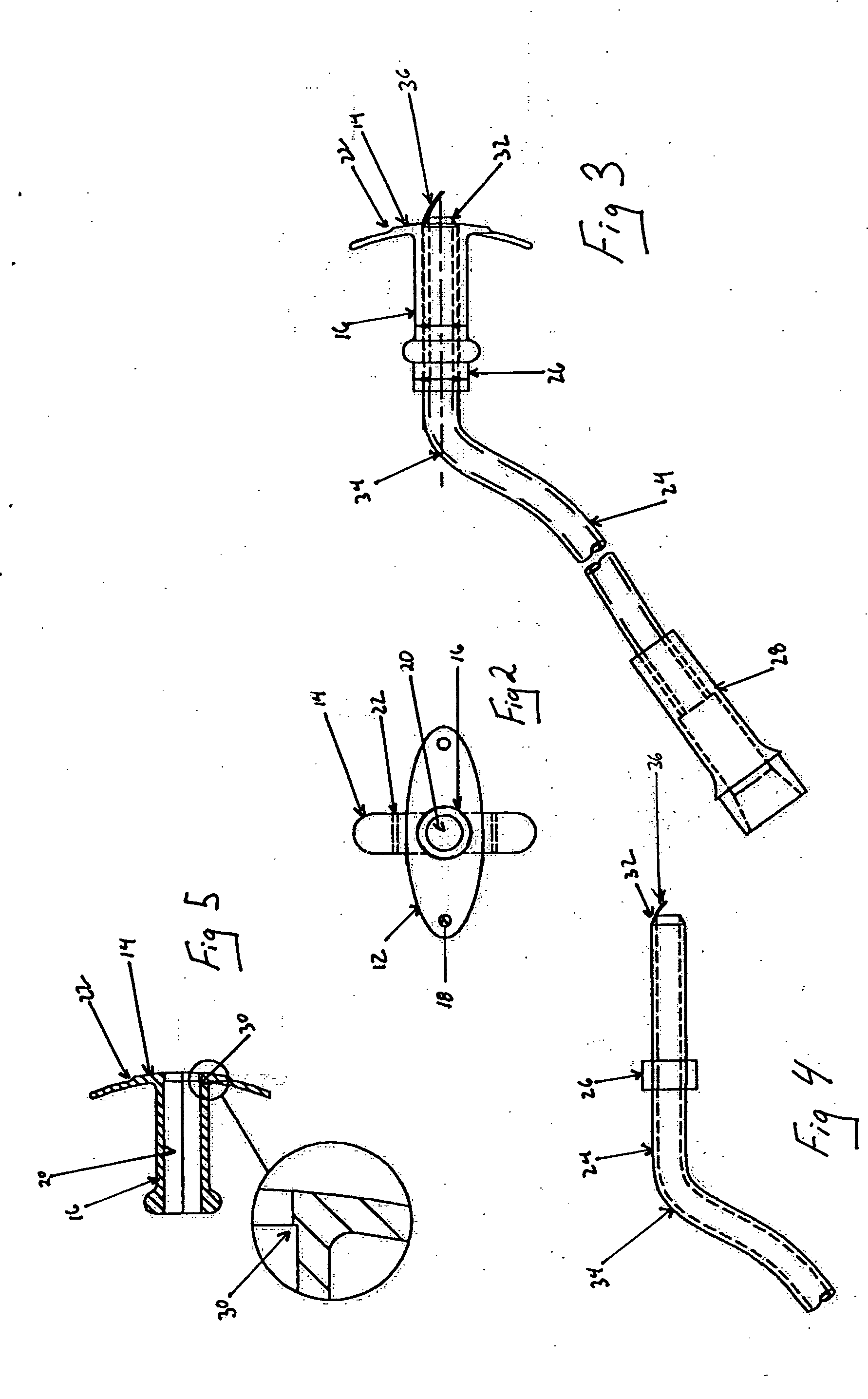Transtracheal oxygen stent
- Summary
- Abstract
- Description
- Claims
- Application Information
AI Technical Summary
Benefits of technology
Problems solved by technology
Method used
Image
Examples
Embodiment Construction
[0021] The present invention, which overcomes the shortcomings of the prior art is shown in FIG. 1. The transtracheal stent 10 is shown with a first flange 12, a second flange 14, and a connection tube 16. The tube 16 connects the two flanges and has a lumen 20 extending therethrough allowing for fluid communication from the first flange 12 to the second flange 14.
[0022] As shown in FIG. 1 both the first and second flanges have a curved shape. This curved shape opposes movement of the transtracheal stent after it has been implanted in a patient. The shape of the first flange 12 approximates the curvature of the patients neck, this has the benefit of avoiding unnecessary obtrusion from the patient's neck and providing for a relatively comfortable resting point of the device. The first flange may also be equipped with holes 18 for securing the stent 10 to the patient through the use of sutures or other surgical securing means. The curvature of the second flange 14 acts against the in...
PUM
 Login to View More
Login to View More Abstract
Description
Claims
Application Information
 Login to View More
Login to View More - R&D
- Intellectual Property
- Life Sciences
- Materials
- Tech Scout
- Unparalleled Data Quality
- Higher Quality Content
- 60% Fewer Hallucinations
Browse by: Latest US Patents, China's latest patents, Technical Efficacy Thesaurus, Application Domain, Technology Topic, Popular Technical Reports.
© 2025 PatSnap. All rights reserved.Legal|Privacy policy|Modern Slavery Act Transparency Statement|Sitemap|About US| Contact US: help@patsnap.com



